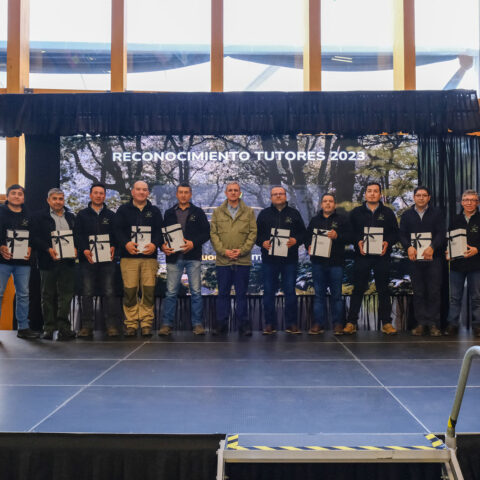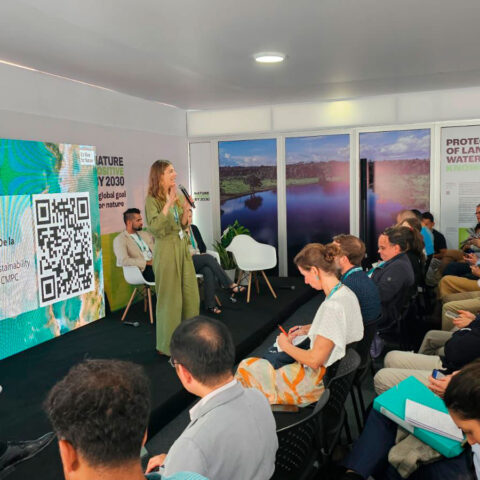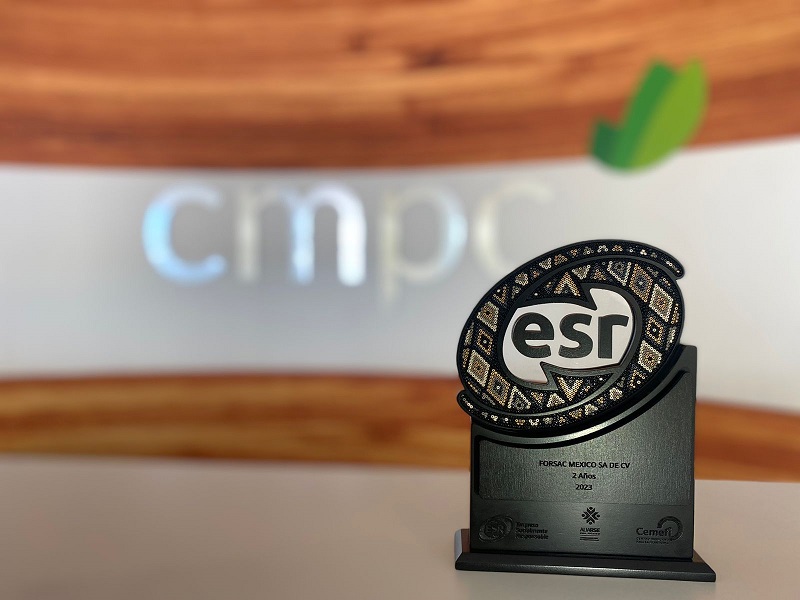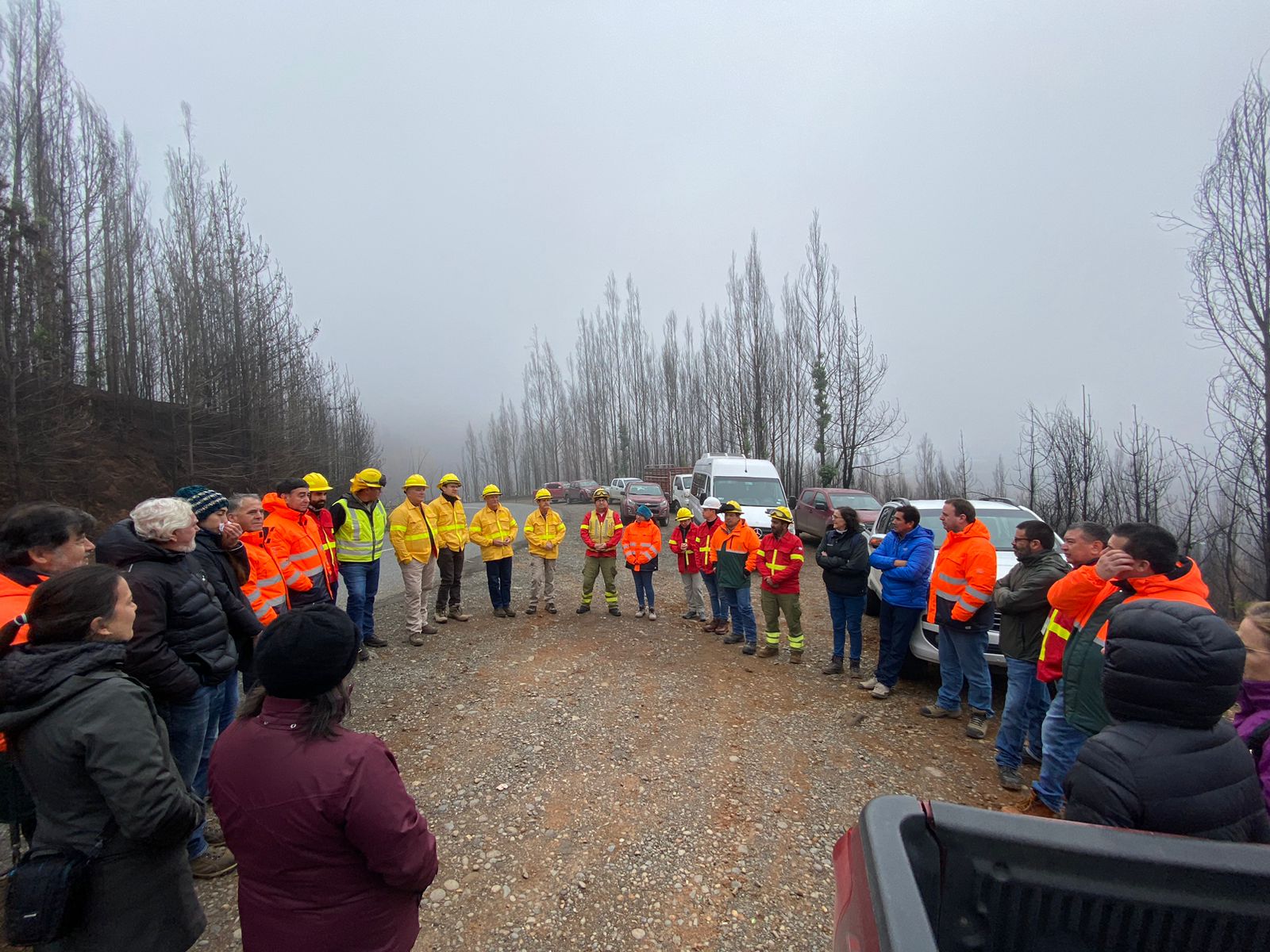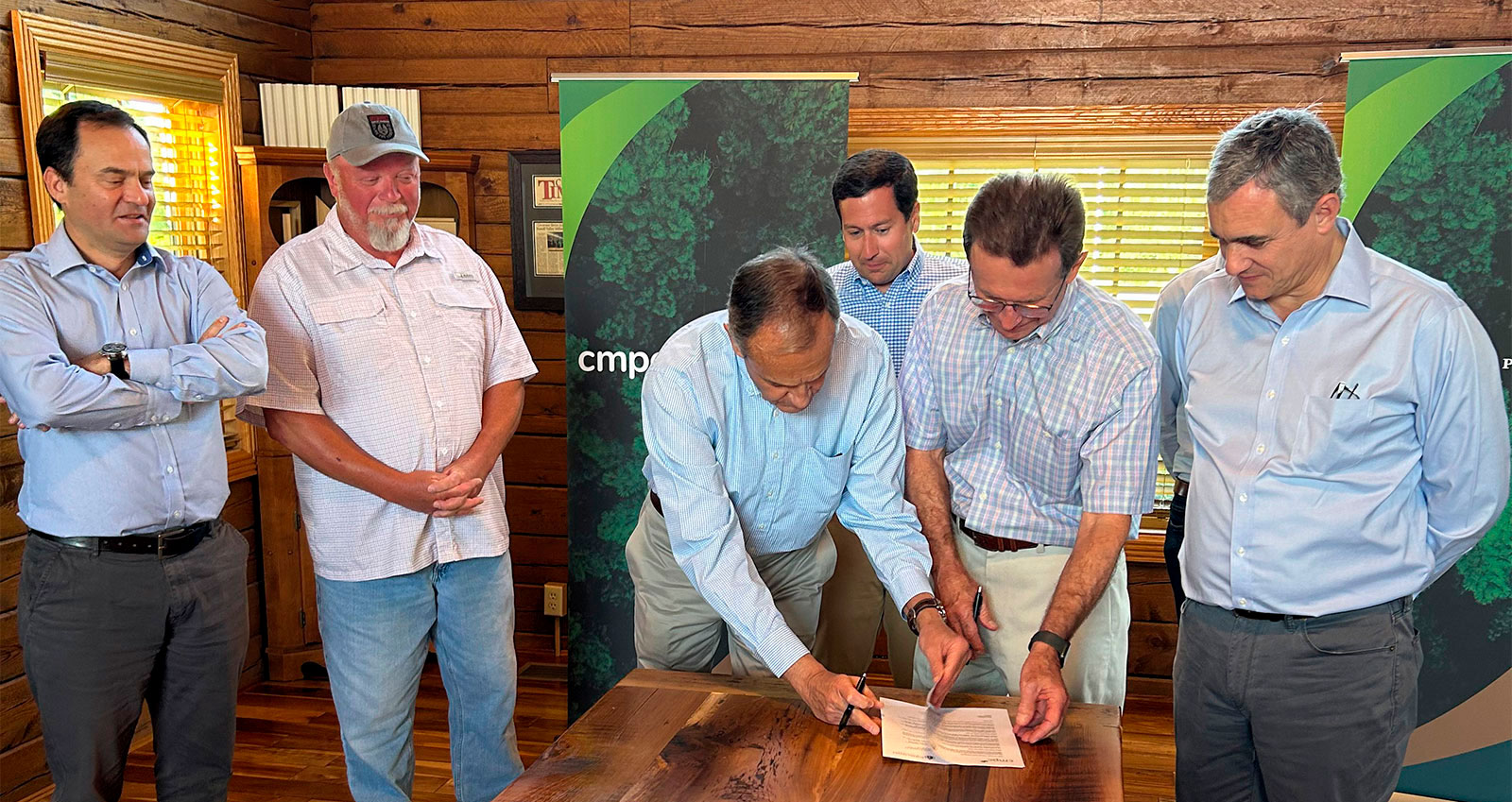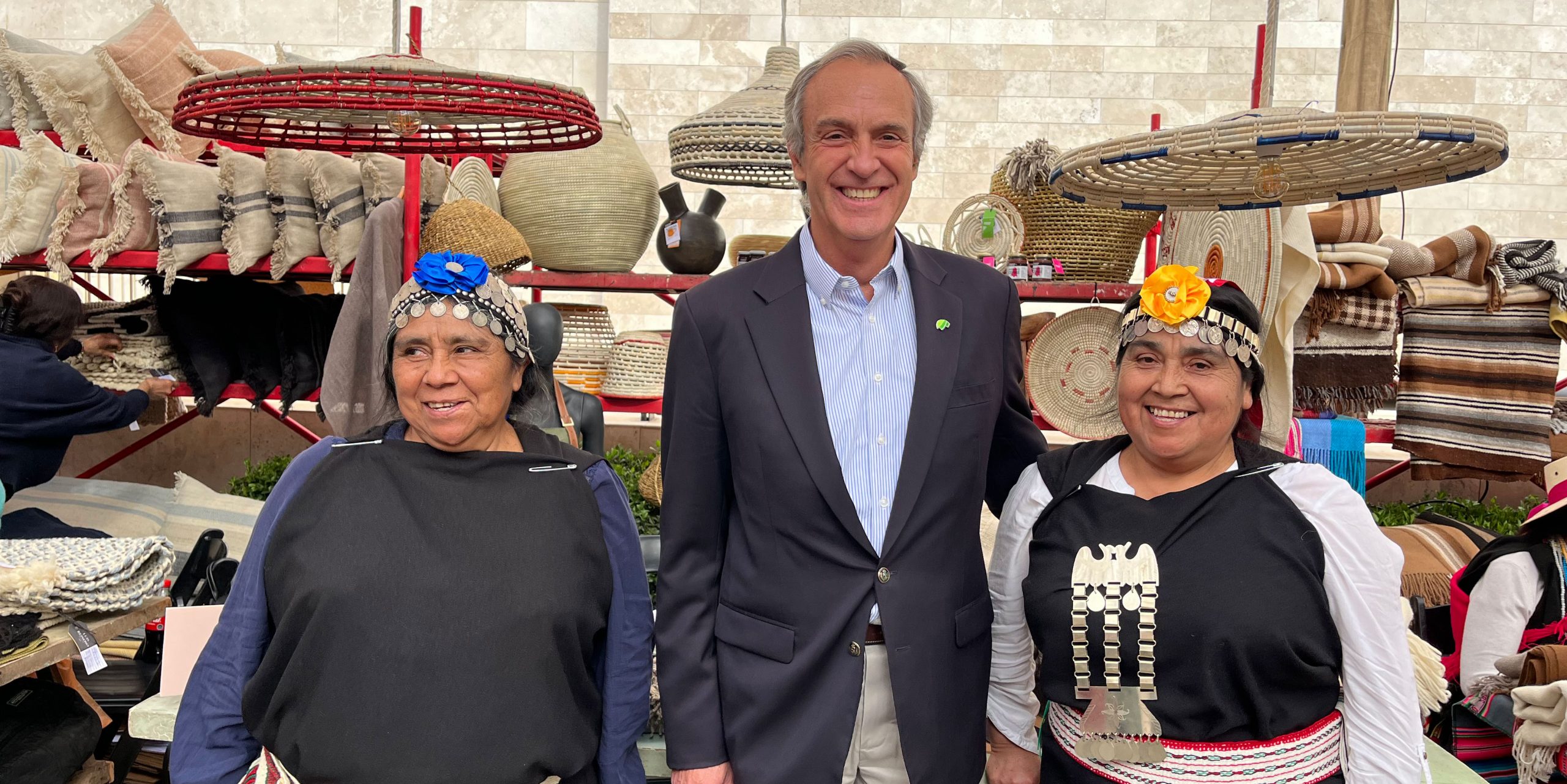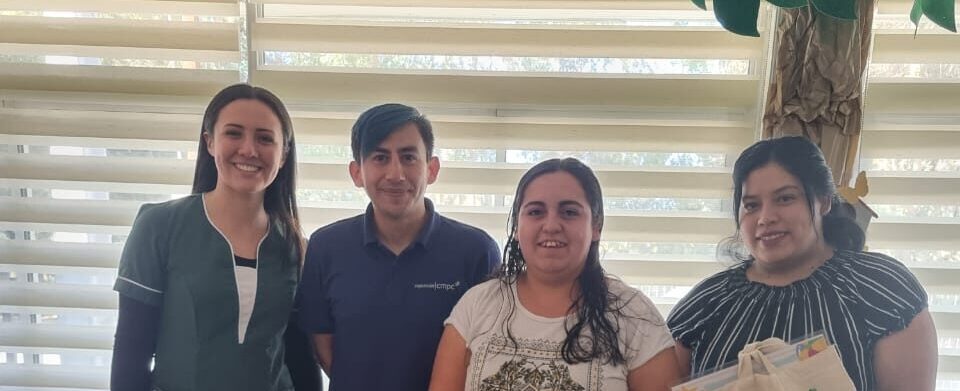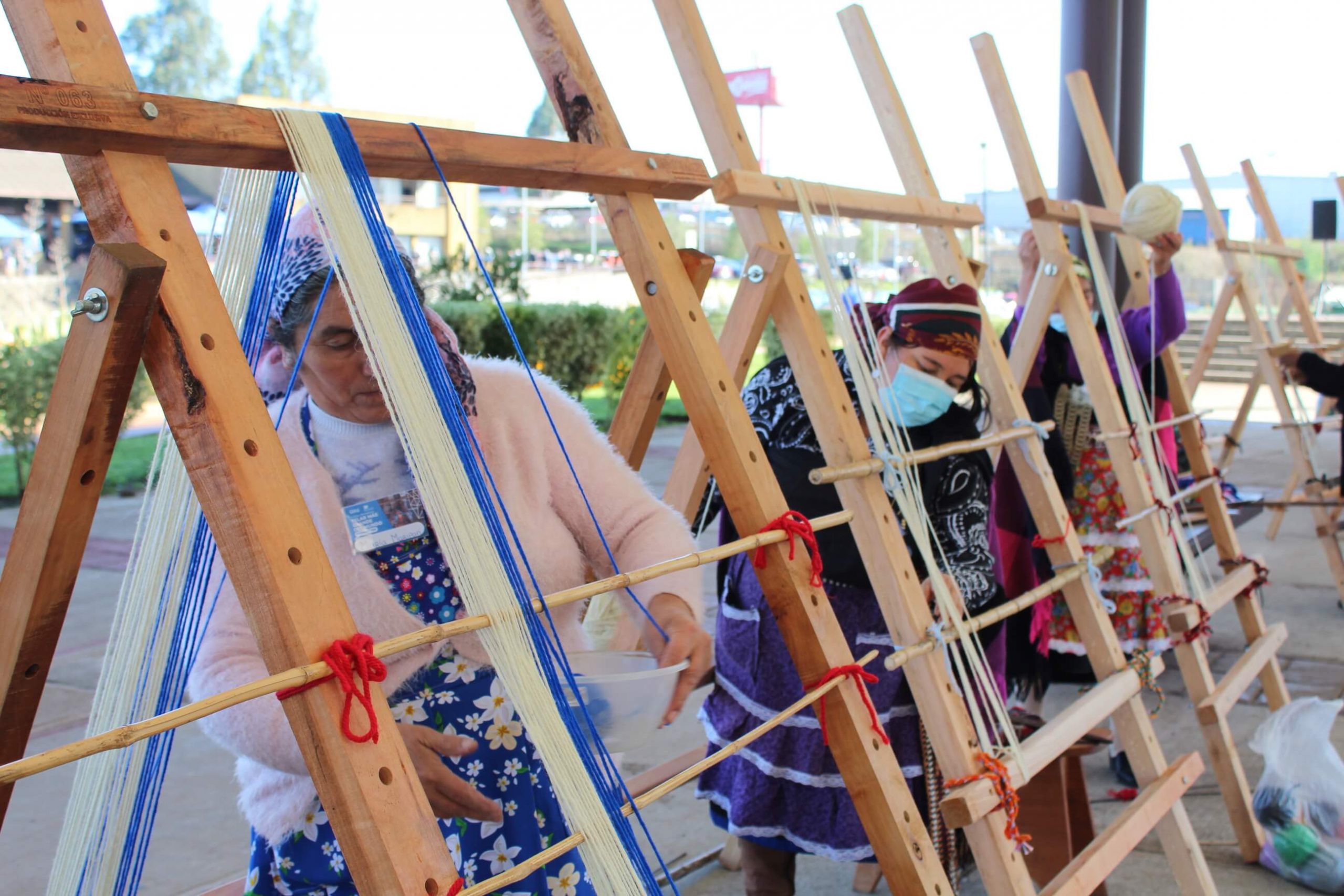
Puerto Saavedra prepares to host the record for the world’s largest loom
17 de May, 2022
On May 21, on the waterfront of Puerto Saavedra, the event will take place where the weavings will be joined to culminate with the largest loom in the world. The initiative seeks to break the record currently held by a work carried out in China in 2017, when 322 weavers made a loom of 276 square meters.
There is less and less time left for what could be an unprecedented event in the country: the first world record 100% carried out by Mapuche weavers. This is “Nguren 1 Km”, a project carried out by Fundación Chilka (Chilka Foundation) in collaboration with CMPC, municipalities, universities and the Government of Chile, which will seek this milestone by showing the community what would be the largest loom in the world, with an extension of one kilometer long and fifty centimeters wide. This will represent a Relmü, rainbow in Mapudungún language.
A total of 500 weavers will meet on May 21 at 8 a.m. on the Puerto Saavedra waterfront to begin joining the parts of this loom that they spun at home or with their communities. Once they are united, the international judge will evaluate the loom and the number of weavers to certify if it will be a record or not.
A few days before this world record is attempted, a ceremony was held at the Espacio Fibra Local in Temuco to mark the countdown to this important event. Some of the weavers, the mayor of the municipality of Puerto Saavedra, Juan Paillafil and the president of Fundación Chilka, Ariel Traipi, the latter highlighting that, after years of hard work, the “dream” is materializing, attended it.
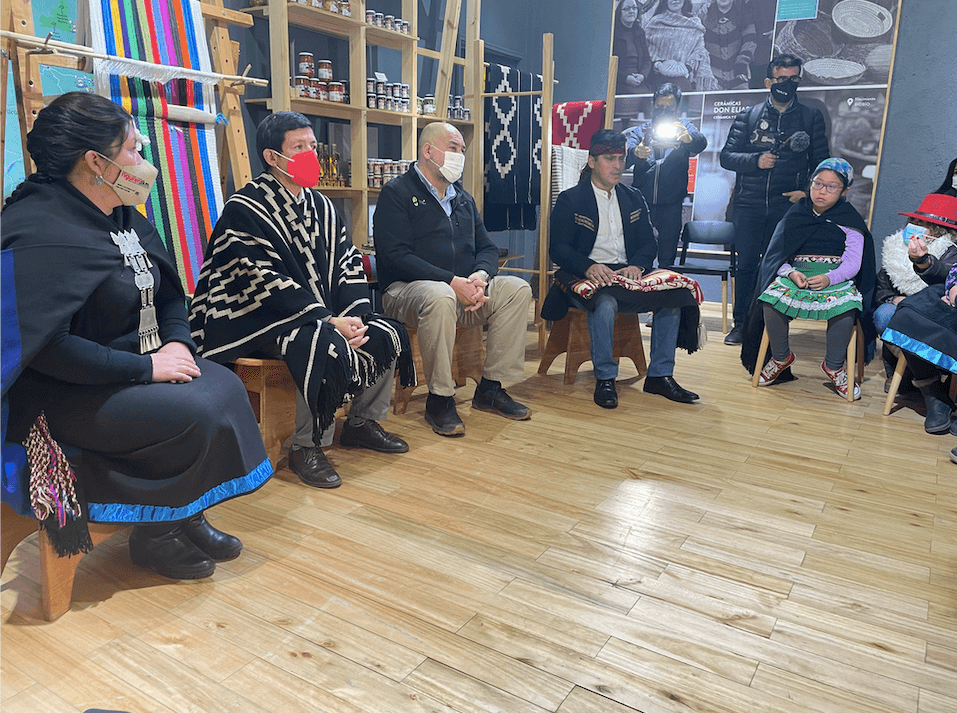
“We are giving a sign of hope to our region, to our people. So not only with this work, we want to set a historical precedent. But that we are also contributing to the identity of our people, we are leaving a legacy for future generations”, said Ariel Traipi.
Patricia Lipin, one of the weavers who coordinated a group of women from the Puerto Saavedra territory, said: “We are many weavers, from different territories and part of Argentina as well. We are very happy and joyful because this is ending and we have been waiting for it for a long time. As a people it is very important because it is something that had never been done before, somehow we always wanted to show our work because it is an ancient work where we have been working for a long time and this is a way to show our culture and work.”
The loom will seek to break the current record held by a work made in China in 2017, for which it will have the assistance of an international judge to certify it.

The director of Fundación Chilka, Ariel Traipi, also spoke about the collaborative work involved in the initiative. “The kelluwün (in Mapudungun: solidarity from a community dimension) is the fundamental basis that moves our culture. It is part of the collaboration and mutual help and that has been fundamental because that was the first thing that sustained this work, we would not have achieved it alone. With the support of many people we have achieved this process”, he explained.
Juan Paillafil, Mayor of Puerto Saavedra, noted, “We as the municipality of Puerto Saavedra wanted to support this initiative because we believe that the work done by our weavers represents the art, work and sacrifice of our Mapuche women.”
Juan Carlos Navia, CMPC’s head of corporate affairs south, said “We cannot be absent as a company that has a strong presence in territories where there are Mapuche communities. We could not be absent from an initiative as powerful as this, not only for the region, but also for the country. It is a huge initiative that shows that when public and private players work together with the Mapuche world, great things can be achieved.”
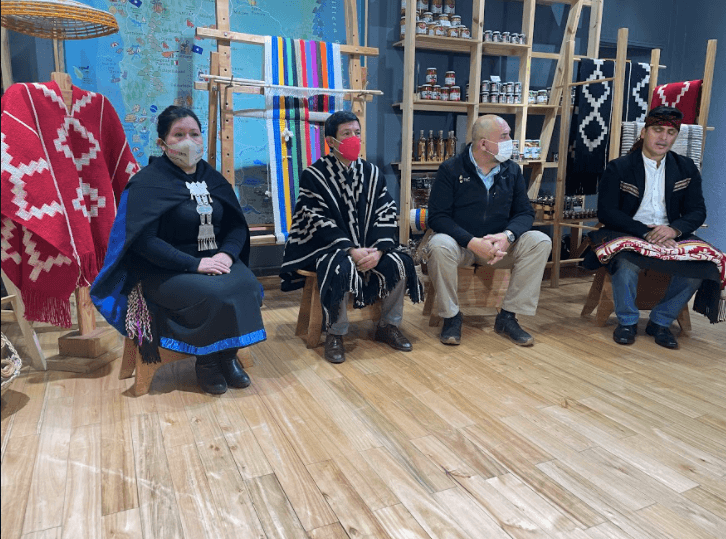
After this milestone, the loom will be exhibited at the Museo Ferroviario (Railway Museum) in Temuco and then divided into four parts that will be distributed throughout the country and, some of them, will seek to be exhibited in different spaces around the world, such as the Louvre Museum or the Permanent Forum of the United Nations.

